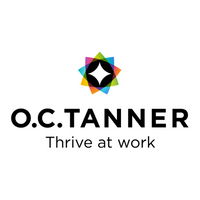Four ways to connect recognition and employee engagement

Measuring great work leads to more innovation, retention and stronger workplace cultures and so it’s no wonder that employee recognition has found itself front and centre of any thriving workplace culture over the last two years.
Key to this is how workers engage with each other and with the company. It’s not enough to simply “offer” a recognition programme anymore. Instead, it needs to become the beating heart of the workplace, giving everyone fast and easy access to recognise the great work of their colleagues.
Making this a guiding principle of your organisation helps ensure your people stay connected, both to each other and to your culture, which in turn leads to greater retention, higher motivation and more collaboration.
Here are some of the key ways to tie together recognition and employee engagement so your people stay connected, and your culture thrives.
1. Rethink HR
For many organisations, this became a necessity during the pandemic, as HR (alongside IT) departments took centre stage in adapting to the new conditions. Now is the time to lean into that trend and ask whether your HR leaders are only responsible for recruiting and benefits, or if they lead the way for building a strong, connected, resilient workplace culture?
Empower HR leaders to build workplace culture and ensure HR initiatives are company initiatives, not just HR programmes. Leading by example is critical when it comes to adopting new programmes such as employee recognition. Connecting this to your people and to the workplace culture itself all starts with leaders embracing the change.
2. Focus on behaviours
Research shows there are five types of behaviours that employees who consistently do great work demonstrate. By understanding these and giving people the opportunities to act in these ways, employees will feel a greater connection to the organisation and each other. Great work will then follow. These behaviours include:
Asking the right question – When people ask how they can make a difference and focus on who their work serves.
Going and seeing – Those who observe and examine from a variety of perspectives to see new possibilities.
Talking to an outer circle – When people talk to others they wouldn’t normally interact with and generate ideas they wouldn’t normally think of.
Improving the mix – People who don’t make improvements randomly, they think, plan, and fine tune the changes they make.
Delivering the difference – Workers who are laser-focused on positive results and who persist until they get it.
While employees have different personas and work styles, preferences, personalities, and motivators, every employee is capable of doing these five great work behaviours.
These insights make great work a more practical metric than engagement, as companies can tailor strategies to maximise employee performance.
3. Embrace Technology
The role of technology in building and keeping culture has become paramount in recent years, as some organisations have moved to hybrid or completely remote workforces.
Establishing a successful culture of recognition and engagement is ever-reliant on the technology and apps we use for work and so they must be as innovative and user friendly as the apps employees use every day at home.
When technology is well integrated with an organisation’s culture, there is a 5x higher likelihood of employee engagement, 4x higher likelihood of an eNPS promoter, 47% lower likelihood of attrition, and a 35% decrease in moderate to severe burnout, according to OC Tanner’s Global Culture Report.
With that in mind, it’s critical to ensure your culture-building technology is accessible to employees in the office, offline, and remote, and that they are easy to use, integrated, and purposeful. Be proactive in providing tools and apps that help employees feel more connected to your organisation’s purpose, their accomplishments, and one another.
4. Be Flexible
In the wake of companies being forced by the pandemic into restructuring their workflow, the reality is that companies must offer more flexibility in the workplace.
But flexibility applies to more than just where, or even when, employees work. It also means letting employees have a voice in deciding which type of work they do at home compared with the office. OC Tanner’s 2022 Global Culture Report found tasks that require focus or creative thinking are easier to do at home, while tasks requiring collaboration and connection are easier and more productive in the office.
Looking ahead, employees expect increased flexibility in many aspects of their work lives and will change jobs, if necessary, to get it. But when employees have flexibility in how they work, outcomes improve, including a 41% higher likelihood of engagement and a 77% higher likelihood of retention.
A little feedback goes a long way
Small changes can make a big difference. Becoming more receptive to feedback from all quarters of the business, along with empowering our HR and IT teams to make crucial decisions, can all have a huge impact on engagement, retention and connection to purpose.
Creating a culture of recognition enhances that connection, increases employee engagement and leads to both great work and a thriving workplace culture.
For more information about the latest trends and insights on workplace culture, download the 2022 Global Culture Report.
The author is James Humpoletz, OC Tanner
Article supplied by OC Tanner
Supplied by REBA Associate Member, O. C. Tanner
The worldwide leader in employee recognition solutions that help people thrive at work.







